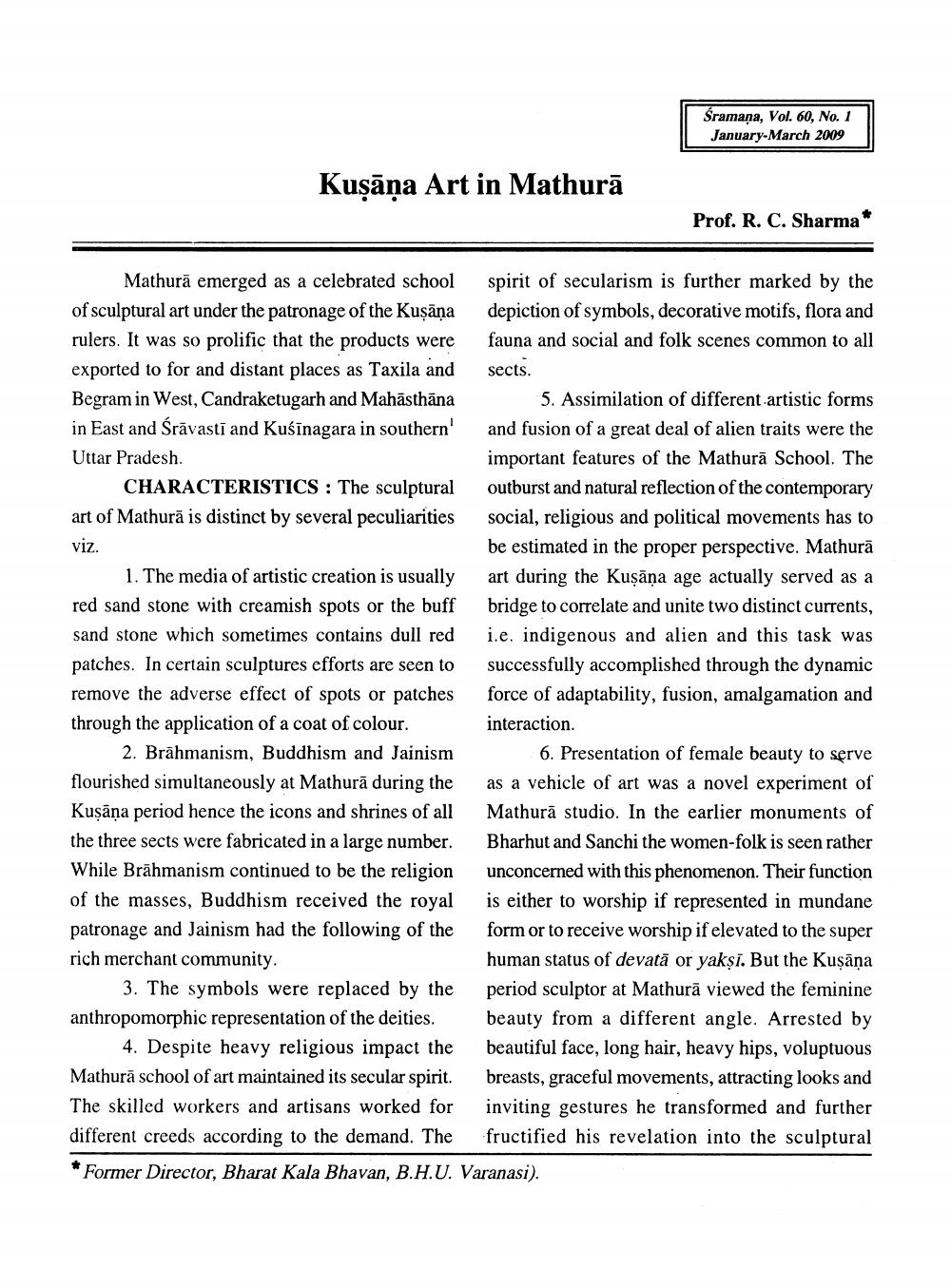________________
Kuṣāna Art in Mathurā
Mathura emerged as a celebrated school of sculptural art under the patronage of the Kusana rulers. It was so prolific that the products were exported to for and distant places as Taxila and Begram in West, Candraketugarh and Mahästhäna in East and Śrävasti and Kusinagara in southern' Uttar Pradesh.
CHARACTERISTICS: The sculptural art of Mathura is distinct by several peculiarities viz.
Śramana, Vol. 60, No. 1 January-March 2009
Prof. R. C. Sharma'
spirit of secularism is further marked by the depiction of symbols, decorative motifs, flora and fauna and social and folk scenes common to all
sects.
1. The media of artistic creation is usually red sand stone with creamish spots or the buff sand stone which sometimes contains dull red patches. In certain sculptures efforts are seen to remove the adverse effect of spots or patches through the application of a coat of colour.
2. Brahmanism, Buddhism and Jainism flourished simultaneously at Mathura during the Kuṣāna period hence the icons and shrines of all the three sects were fabricated in a large number. While Brahmanism continued to be the religion of the masses, Buddhism received the royal patronage and Jainism had the following of the rich merchant community.
3. The symbols were replaced by the anthropomorphic representation of the deities.
4. Despite heavy religious impact the Mathura school of art maintained its secular spirit. The skilled workers and artisans worked for different creeds according to the demand. The Former Director, Bharat Kala Bhavan, B.H.U. Varanasi).
5. Assimilation of different artistic forms. and fusion of a great deal of alien traits were the important features of the Mathura School. The outburst and natural reflection of the contemporary social, religious and political movements has to be estimated in the proper perspective. Mathura art during the Kuşāna age actually served as a bridge to correlate and unite two distinct currents, i.e. indigenous and alien and this task was successfully accomplished through the dynamic force of adaptability, fusion, amalgamation and
interaction.
6. Presentation of female beauty to serve as a vehicle of art was a novel experiment of Mathura studio. In the earlier monuments of Bharhut and Sanchi the women-folk is seen rather unconcerned with this phenomenon. Their function is either to worship if represented in mundane form or to receive worship if elevated to the super human status of devata or yakṣi. But the Kuṣāņa period sculptor at Mathurā viewed the feminine beauty from a different angle. Arrested by beautiful face, long hair, heavy hips, voluptuous. breasts, graceful movements, attracting looks and inviting gestures he transformed and further fructified his revelation into the sculptural




